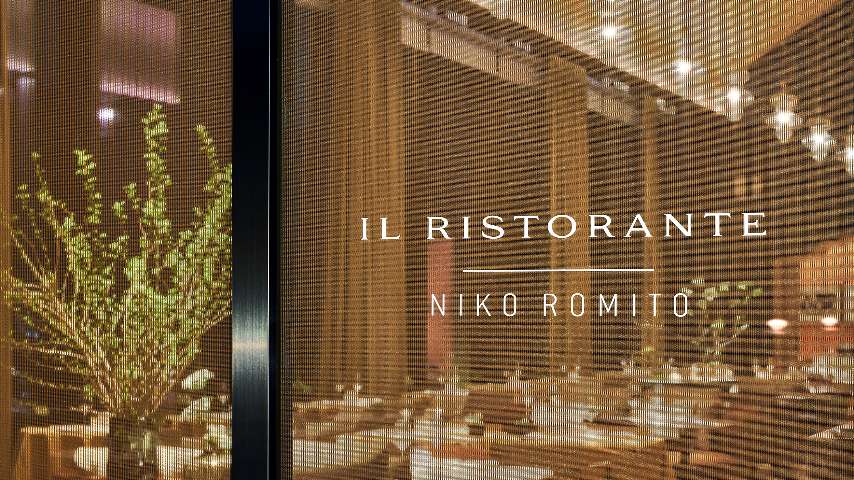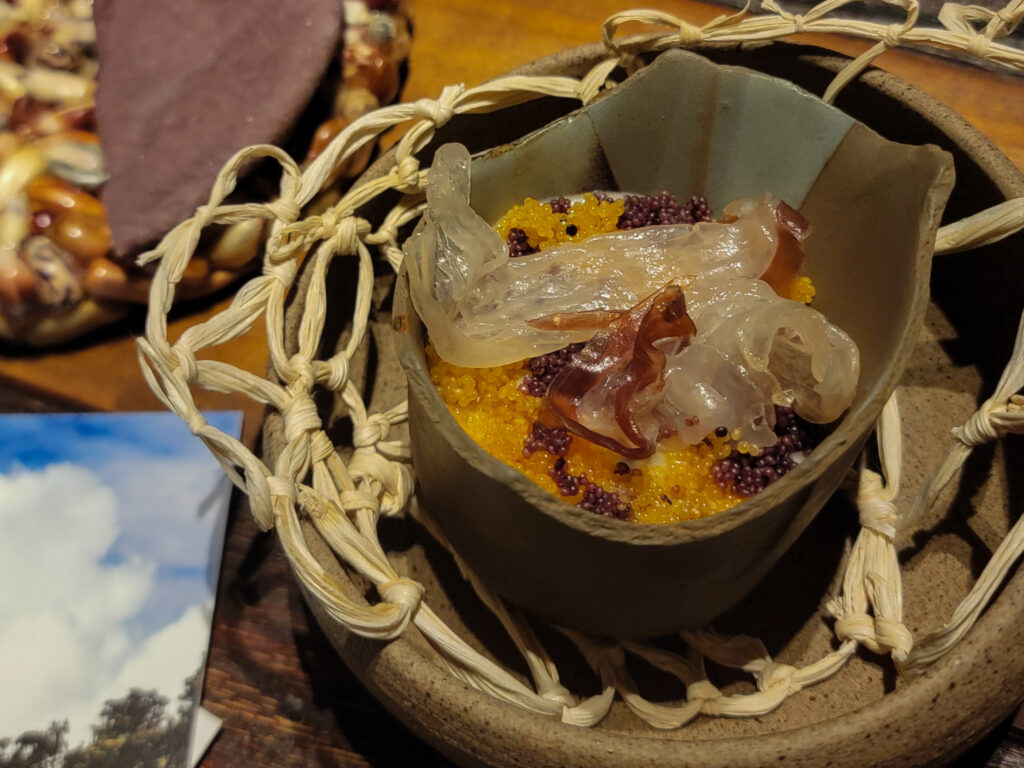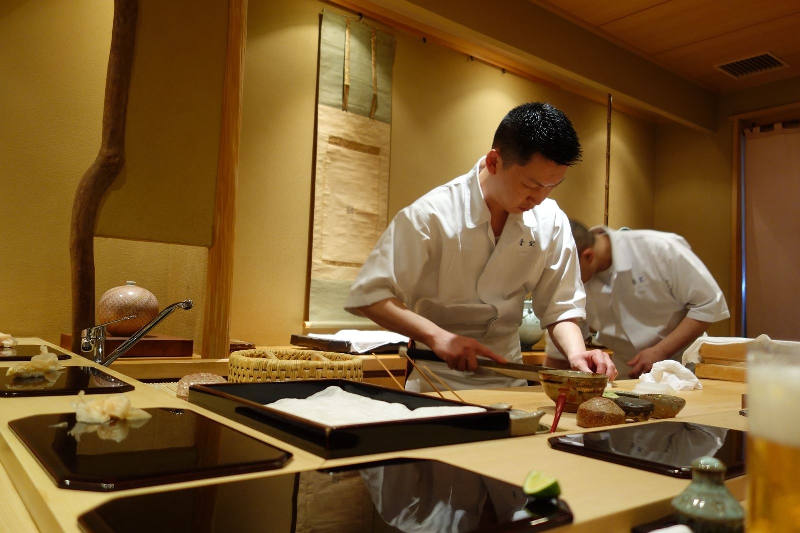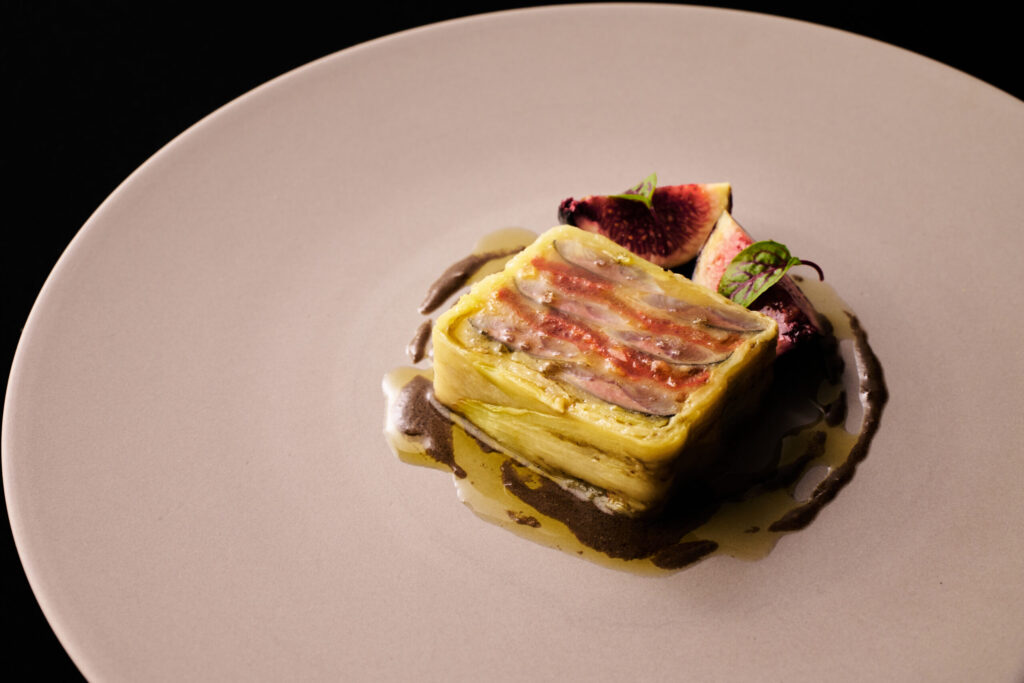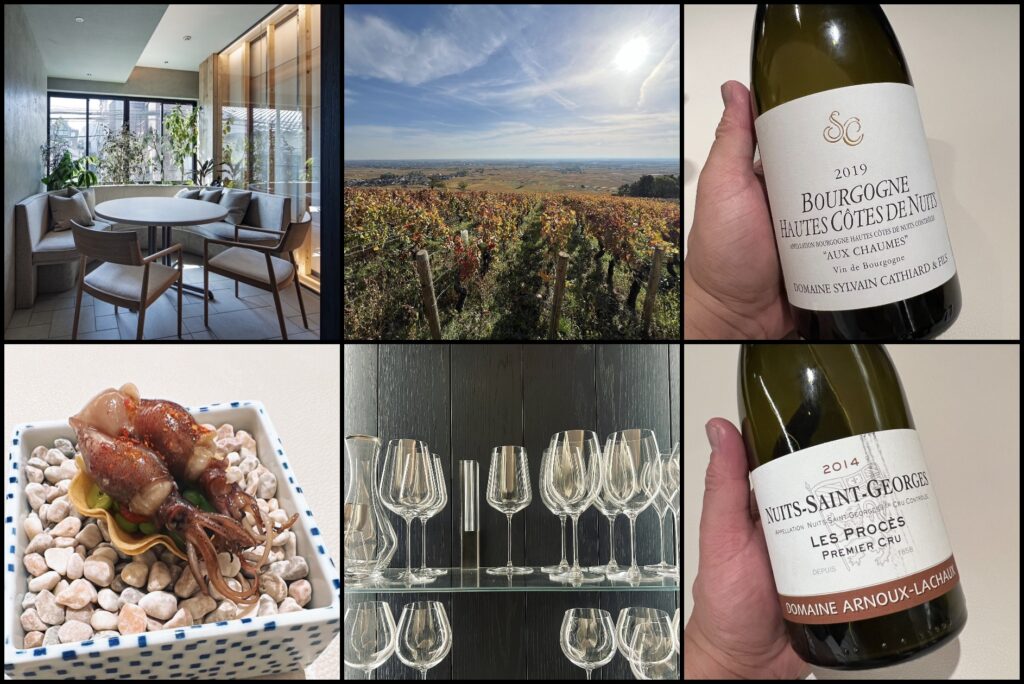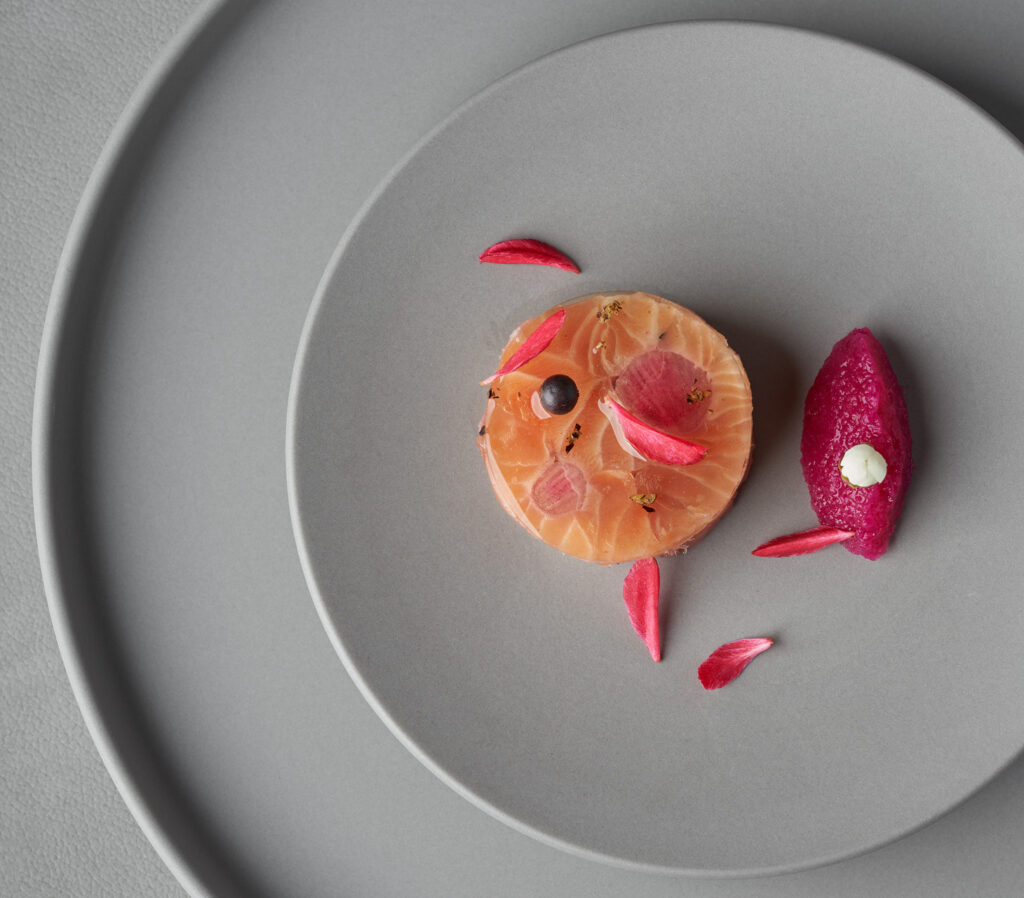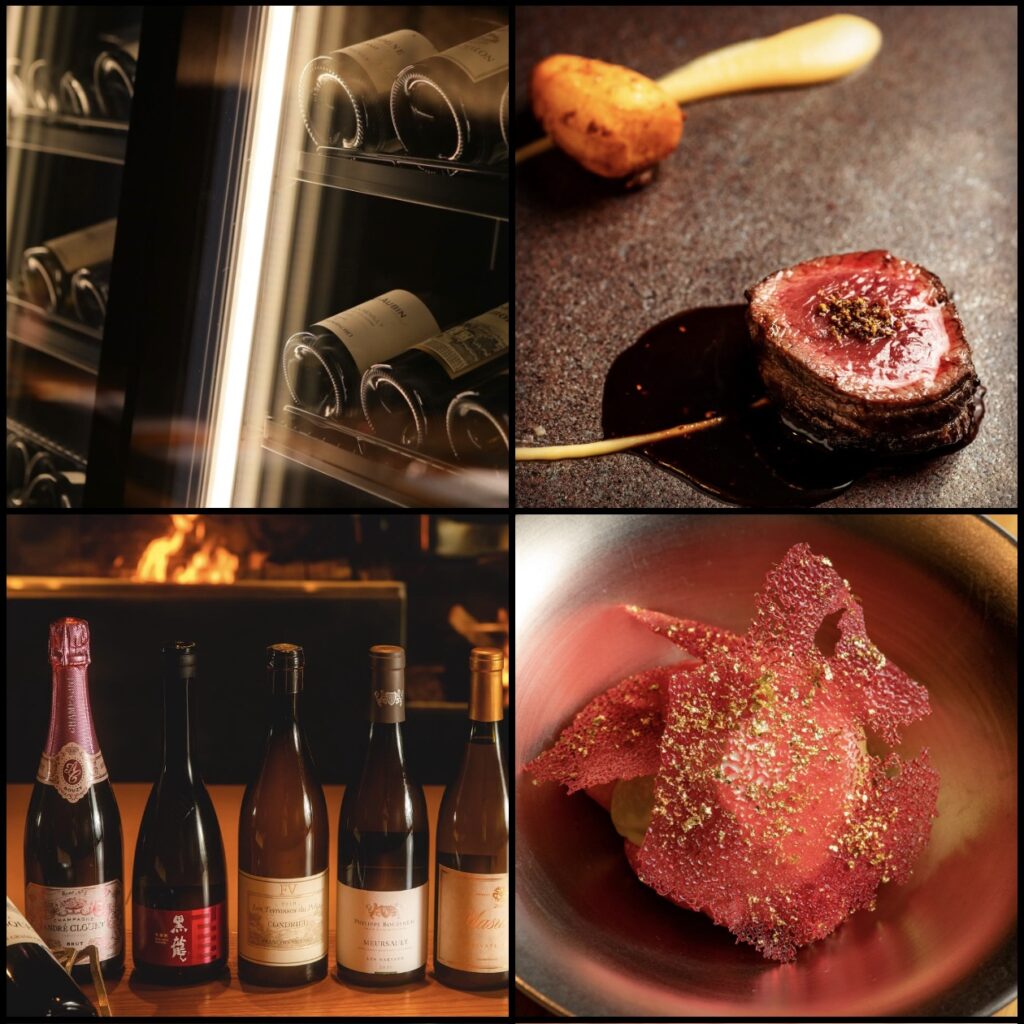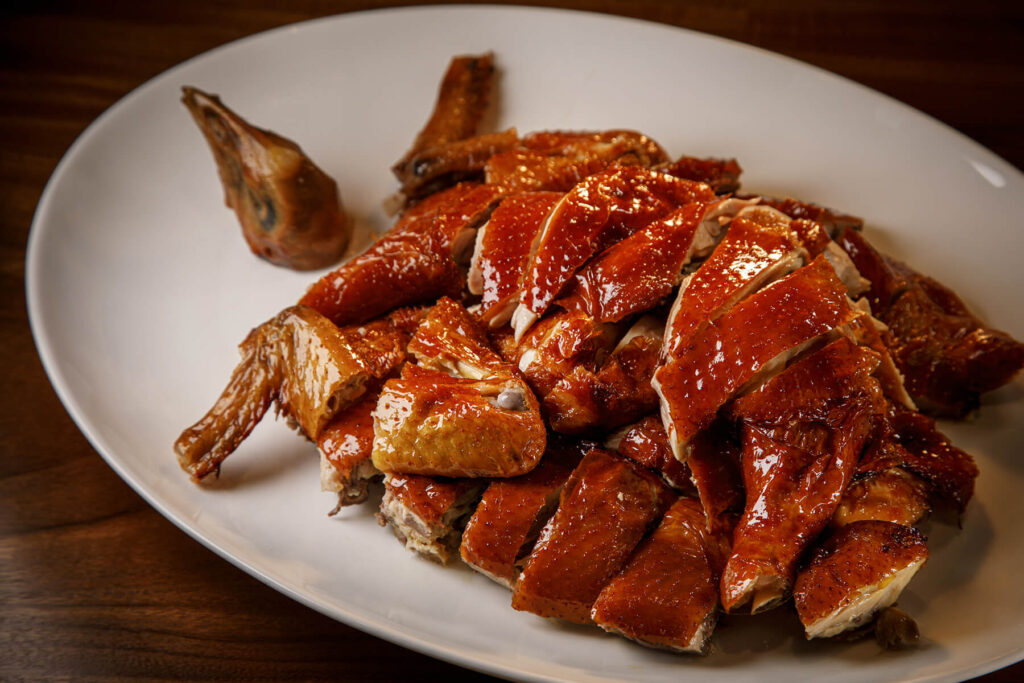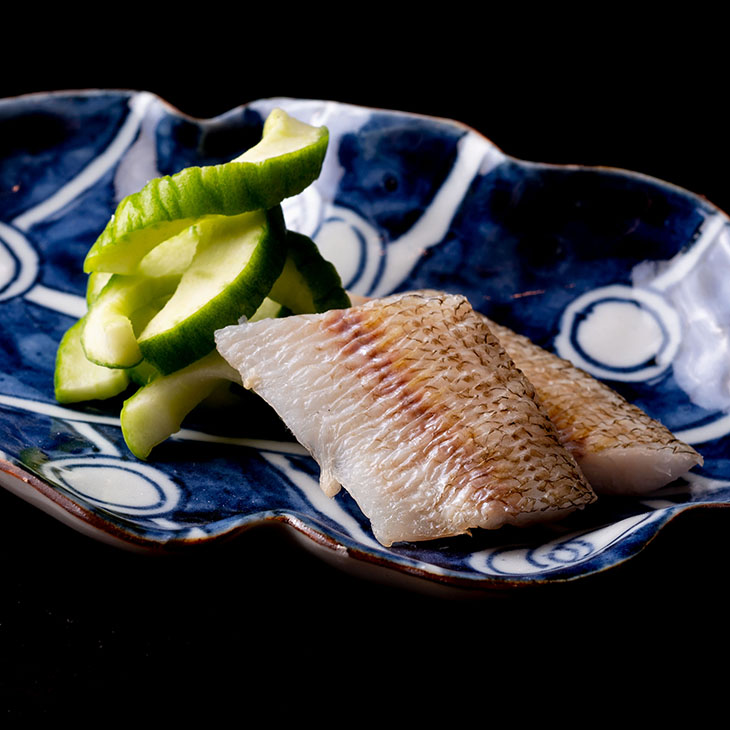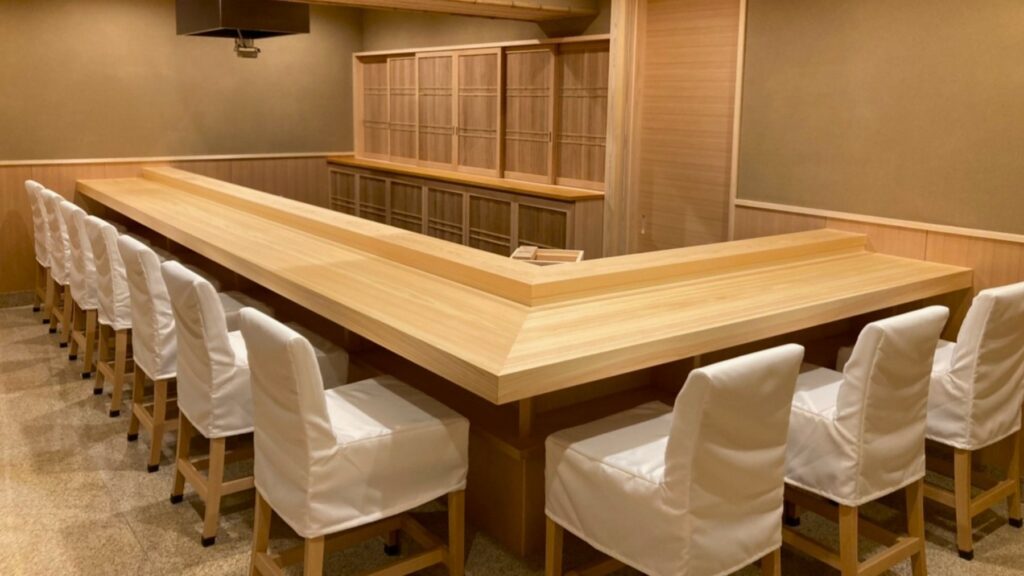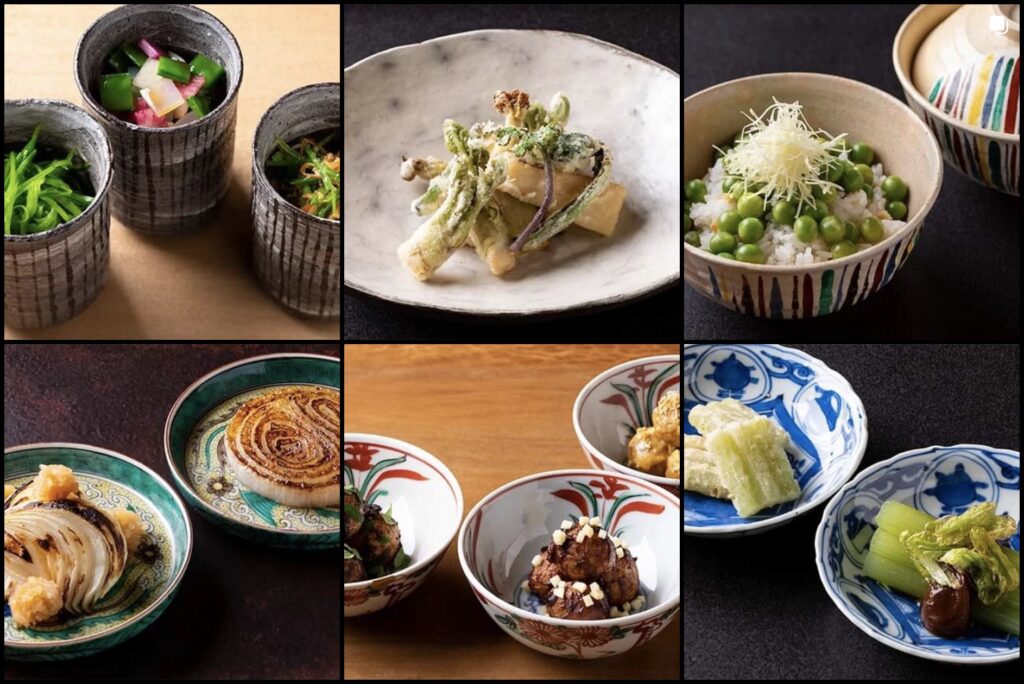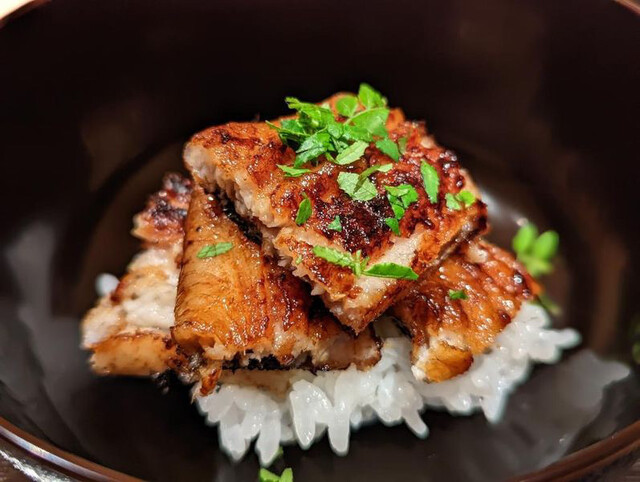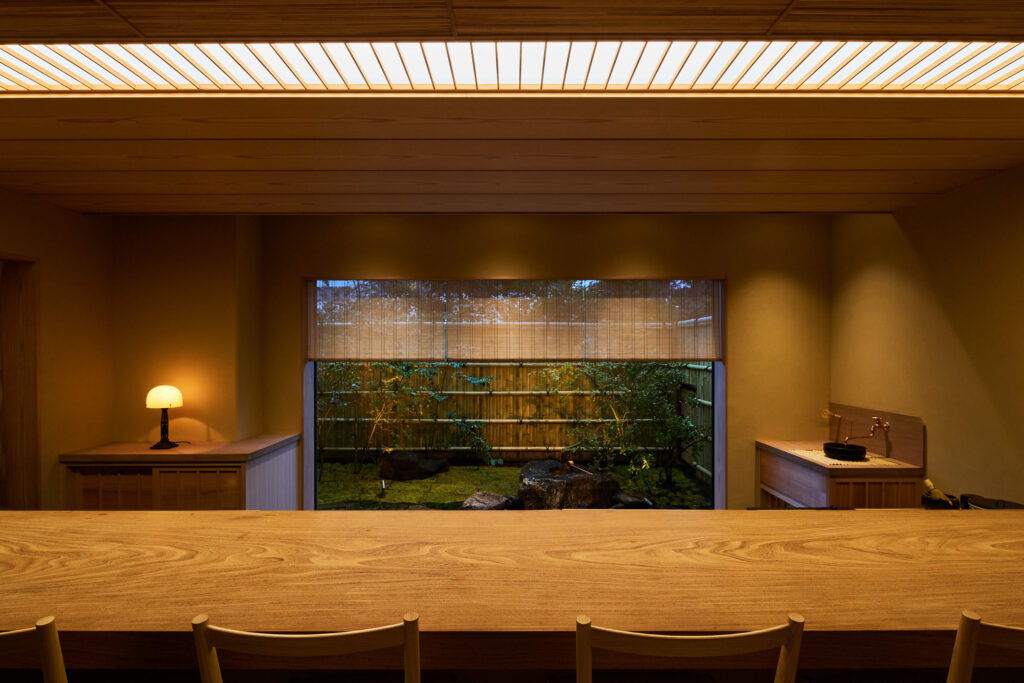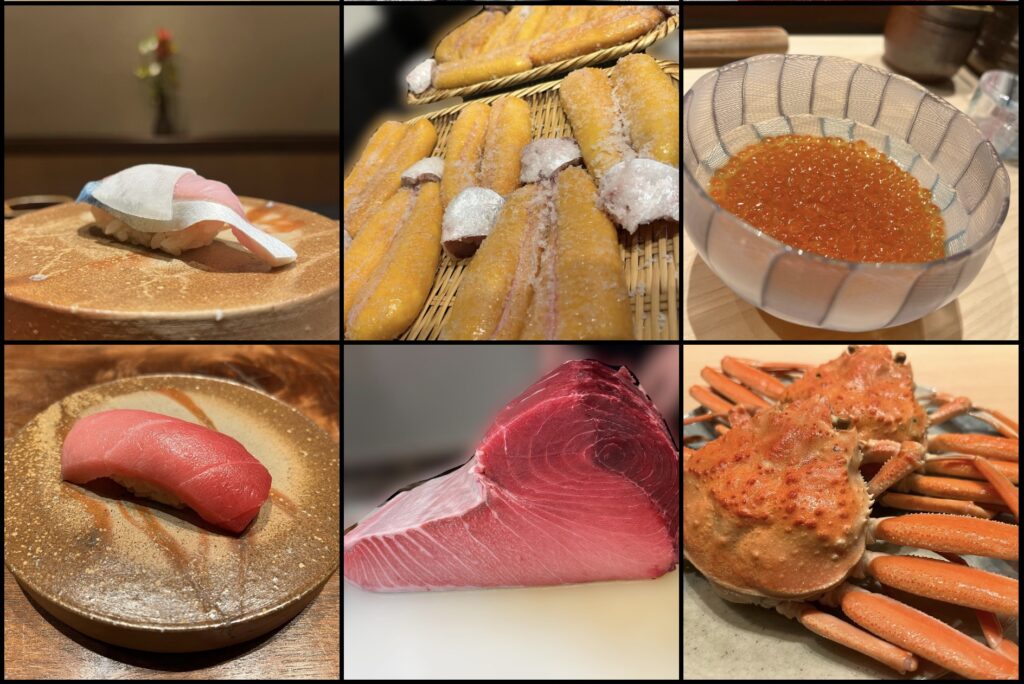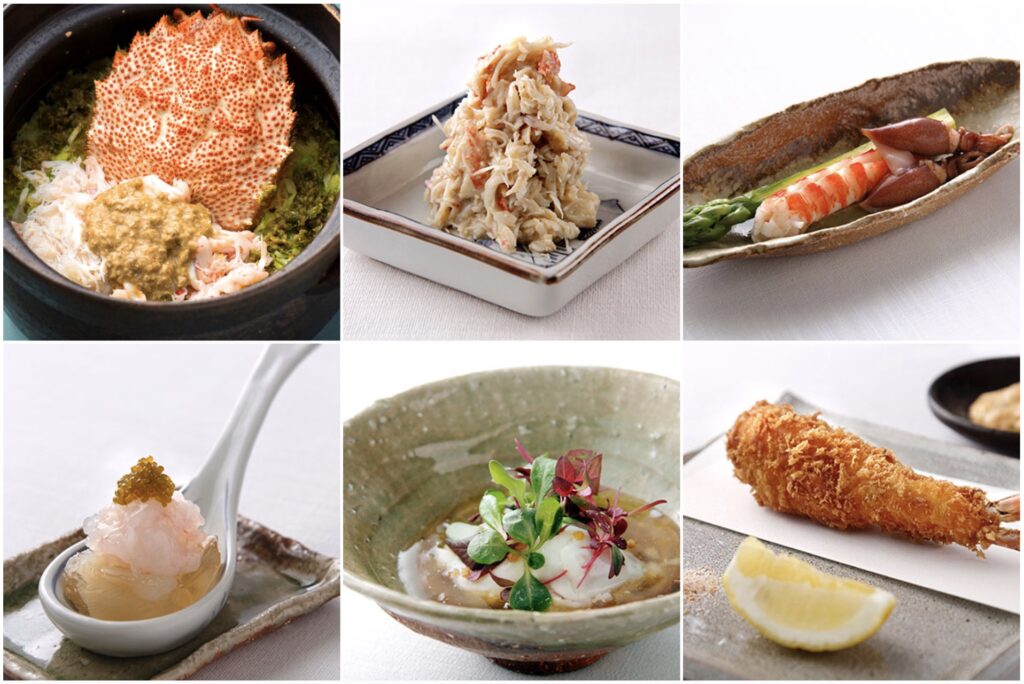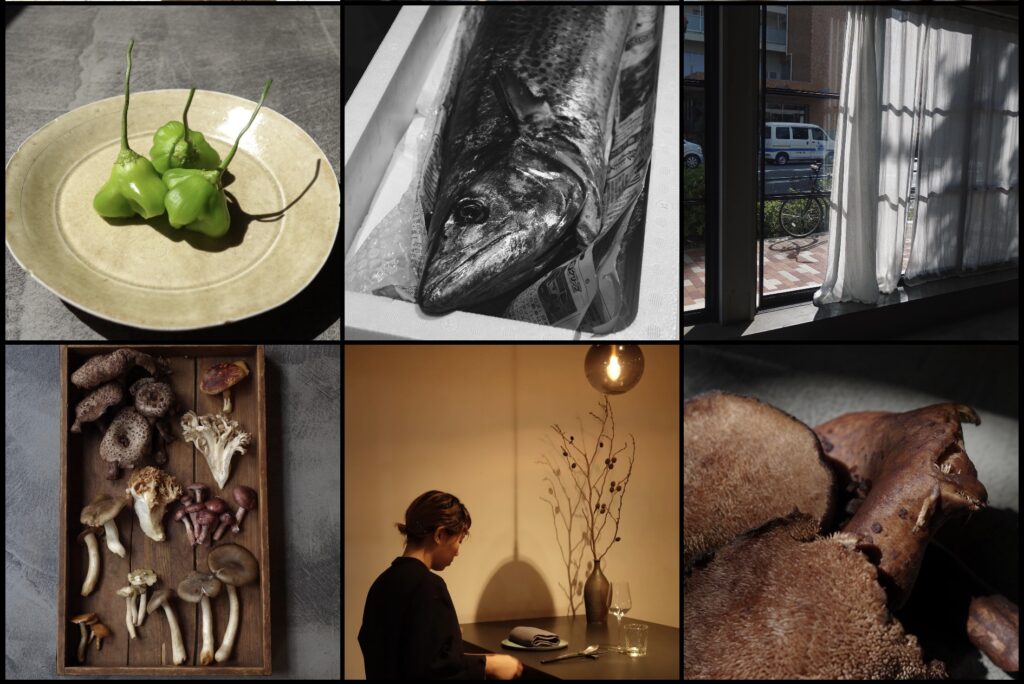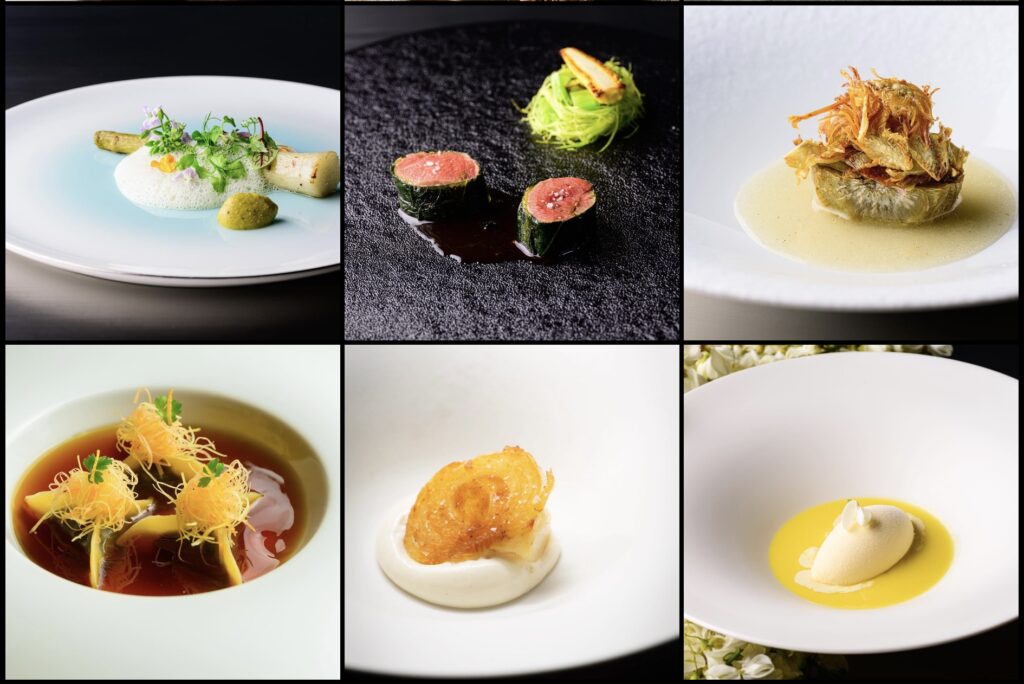Il Ristorante Niko Romito
¥14,000+
If you’re blown away by the idea of a Bulgari Hotel, imagine the resplendence of a Bulgari-branded restaurant! This newly crowned one-star establishment offers customary Italian dishes such as antipasto all’italiana and cotoletta milanese with the philosophy, made in Italy. Lunch and à la carte menus in Japanese and Italian await to dazzle diners in this 40th-floor locale, complete with floor-to-ceiling windows.
Photo:
Il Ristorante Niko Romito
Visit Website
Maz
¥27,500
Winning in the innovation category, the newly selected Peruvian cuisine restaurant Maz received two Michelin stars right out of the gate. Chef Virgilio Martínez Véliz of Restaurant Central and executive chef Santiago Fernández Saim offer a nine-course tour of Peru’s geological and bio-diversity through a dialogue with Japanese ingredients. The menu’s poetic take on fine dining promises a South American deep dive without ever leaving Tokyo.
Photo:
Sydney Seekford
Visit Website
Restaurant Harutaka
¥45,000+
Chef Harutaka Takahashi’s outstanding Ginza sushi restaurant now tops the dozen three-starred restaurants calling Tokyo home. After a 12-year tenure under sushi greatness Jiro, Chef Harutaka developed his signature rhythmic course style, balancing sweet, sour, umami and temperature for a once-in-a-lifetime sushi dining experience. The third star elevates Sushi Harutaka from its previous two-star ranking.
Photo:
Restaurant Harutaka
Visit Website
Monolith
¥8,800+
Chef Ishii cut his teeth in Paris in the 1990s, where he honed his skill for making the signature, reservation-only pastry dishes Monolith. Rich French mother sauces and a taste of the classics are offset by the chef’s neverending creativity. Diners can’t miss the Monolith Egg, an exploration of both the shape of the monolith and the limits of temperature and flavor pairings. Mono-bis, the Monolith Bistro, offers a look inside Chef Ishii’s mind through a slightly more proletarian lens.
Photo:
Monolith
Visit Website
L’Éterre
¥26,000
L’Éterre pits understated appearances against its world-class French cuisine. Here, diners enjoy elite course menus in a no-frills space that could easily be a friend’s Meguro flat. Simple, Nordic-inspired interiors put full focus on the food, balancing punches from intense flavor, eclectic serving ware and a unique wine list. A bond formed across oceans connects Chef Tagomori with his mentor and L’Éterre’s founder, Chef Yoshiaki Ito.
Photo:
L’Éterre
Visit Website
Ginza L’écrin
¥9,000+
L’écrin’s current chef, Yuhei Kurita, is the eighth generation of a French culinary tradition dating back to 1974. With each chef, the menu takes on a new quality, and Chef Yuhei’s would not be what it is without its fantastic sauces and carefully selected wine list. Complex plating creates a vision of nostalgic Hollywood glamour through a Frenchman’s palate. The crown jewel is a glittering wooden box serving gem-like desserts at the end of the meal.
Photo:
Ginza L’écrin
Visit Website
Trois Visages
¥5,500+
Sushi-style counter seating wraps the chef’s culinary peninsula on three sides, but this isn’t the inspiration for the newly starred contemporary French restaurant Trois Visage. Instead, the “three faces” encapsulates the microcosm of players at work in any restaurant: producers, chefs and guests, and the three pillars of French cuisine: principal, initier and sens. Chef Kuninaga’s expertise shines in his ability to underscore oft-forgotten ingredients and highlight the terroir of Japan through his hyper-local sourcing and dessert-forward luncheons.
Photo:
Trois Visages
Visit Website
Mētis Roppongi
¥18,000+
A wood fire grill kisses cuts of wagyu with steam and smoke in this French powerhouse with Tokyo Tower views. A Japanese soul informed by Western technique, Wakon Yosai, is the heart of Mētis’ culinary philosophy. Come for rare steak–by cook and cut, paired with an exquisite wine list and a dining room decorated like a king’s ryokan (a traditional Japanese inn.)
Photo:
Mētis Roppongi
Visit Website
Piao Xiang
¥24,200
Diners have come to associate Sichuan cuisine with fiery chilis, but the 2,000-year-old tradition upheld through chef Yoshiki Igeta’s cuisine proves there is more to the story, and very little of it is spicy. The chef makes a point to explain that guests should expect neither dishes altered for Japanese palates, nor tampered with to fit the image Chinese food has taken on. Instead, diners will experience his passion for authenticity through the fragrances of Chengdu’s imperial kitchens as they existed millennia ago.
Photo:
Piao Xiang
Visit Website
Koshikiryori Koki
¥18,000+
At Koshikiryori Koki, Chef Tommy’s personality is almost as big as his flavors. The chicken testes are his signature dish and hardest hitter, immersing guests in Hong-Kong style dégustation while his quips keep them laughing between courses. The familial atmosphere extends to heaping plates of crispy chicken, soft-shell turtle soup and sharable big-plate delicacies necessitating a packed house to enjoy fully.
Photo:
Koshikiryori Koki
Visit Website
Ichirin
¥8,800+
Chef Hashimoto Mikizo allows his cooking to do the talking at the self-described little Japanese restaurant Ichirin. Menus that highlight the season through close personal ties with producers employ the Japanese culinary philosophy of five flavors, five colors, five ways. By committing to unfussiness, Ichirin presents Japan’s ingredients in their best light. Simplicity and humility are offered in petite, eclectic dishes that give full voice to their homely but perfected contents. If food could be treated with the dignity and gracious service Japan calls omotenashi, it would be here.
Photo:
Ichirin
Visit Website
Ginza Kitagawa
¥33,000
Flash-frying may not be the first technique that comes to mind when thinking of washoku (traditional Japanese cuisine), but the tempura masters who inspired Ginza Kitawgawa’s star-winning menu prove that it’s just as much a part of Japanese food as raw fish and rice. This restaurant maintains an air of exclusivity. It’s one of those hinoki-plank counters where the regulars, keepers of Kitawagawa’s secret oral history, grant passage only by earned respect. Fortunately for us, with Michelin recognition comes accessibility, and would-be diners can pierce the veil via Omakase.
Photo:
Omakase: Ginza Kitagawa
Visit Website
Mutsukari
¥20,000+
Chef Akiyama Yoshihisa is enamored with vegetables. His courses use 30 to 50 varieties of plant life during each meal, and his close ties with producers have earned him collaborations with Tokyo’s regional tourism sponsorship and even catering spots on JR East’s luxury trains. A decade of public appearances has seen the chef appear on television programs as diverse as France’s Mixeur and Bizarre Foods with Andrew Zimmern. Three floors of seating invite diners to enjoy the legumes of Mutsukari in their preferred setting: front and center of the sixth-floor kitchen or privately tucked away at seventh-floor tables.
Photo:
Mutsukari
Visit Website
Nishiazabu Noguchi
¥28,000
Not yet cresting 35, chef Shotaro Noguchi has already made a name for himself among Nishiazabu’s regular crowd. His mission is as straightforward as his cuisine: To uphold tradition while challenging new ingredients and methods. In practice, this commitment reflects a people-forward approach to cooking. Dining here comes with all the thoughtfulness of home-cooked meals at a favorite local shoku-do (Japanese diner). Chef Noguchi nourishes by putting his heart (i.e., through nods to his wife’s hometown) into every dish. A perfect example is the first course of Noguchi’s early summer menu: a tempura dish to stave off any effects of alcohol too early into the meal.
Photo:
Nishiazabu Noguchi
Visit Website
Miyasaka
¥27,500+
To step into this demure space is to be transported to chef Nobuhisa Miyasaka’s private tea room. Complete with views of a moss garden and an impressive plank counter, the simple elegance of Miyasaka speaks to its reverence for tradition. During his 11 years in Kyoto, the chef developed a complimentary appreciation for the tea ceremony that elevates the whole experience.
Photo:
Miyasaka
Visit Website
Hiroo Ishizaka
¥25,000+
Teiban, (signature). It’s a term embodied by the heavy-hitting (but light on the palate) sushi course offered by Hiroo Ishizaka’s chef night after night. Medium-fatty tuna that could launch a thousand ships is followed by a gunkan of golden uni, sea urchin gonads pried from their spiny treasure chests. Premium miso soup, reliably delectable tamagoyaki (fried egg) and some curve-ball originals (shiitake sushi and soy sauce ice cream) make Hiroo Ishizawa a teiban in the sushi world.
Photo:
Hiroo Ishizaka
Visit Website
Ubuka
¥16,500
Sorry to readers with a shellfish allergy, but you’ll want to skip this one…because that’s all that’s on the menu! Independent of limitations on genre or technique, Ubuka focuses on just one thing: elevating shellfish to its pinnacle. The menu features shrimp for all seasons, with crab dishes, clams and more employed to explore the concept of a restaurant the serves only shellfish. Dive into chef Katou’s crustacean-fueled course with an open mind and prepare to be delighted with the versatility of his chosen ingredients.
Photo:
Ubuka
Visit Website
Kabi
¥8,000+
The name Kabi speaks to chef Yasuda’s time in Denmark, where he studied the particularities of fermented foods. Adapting his knowledge to Japanese palates allowed him to innovate within tradition by drawing upon the history of miso and koji. At Kabi, gastronomy meets ancient foodways through inventive dishes dressed up with pickles, vegetable dust and rustic inspiration.
Photo:
Kabi
Visit Website
Nôl
¥16,500+
Nôl’s contemporary cuisine is characterized by treatment that brings out the true flavor of carefully raised and selected ingredients. The restaurant places value on sustainability by presenting food that will be the “normal” of the future, which has earned it a 2024 green star. In addition to forming close bonds with cyclical and permaculture farmers, the chef considers food waste by using ingredients that might otherwise be discarded.
Photo:
Nôl
Visit Website
